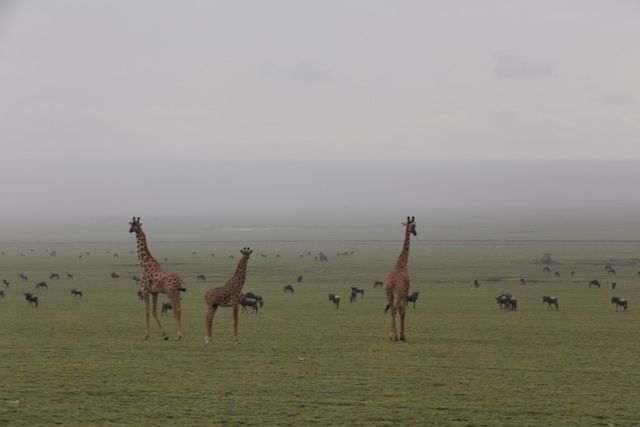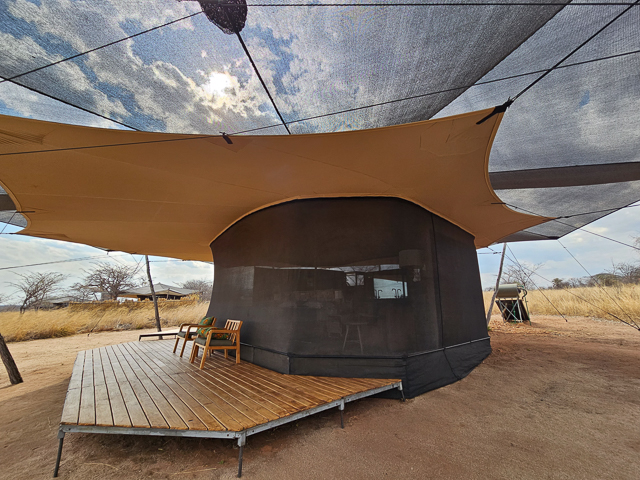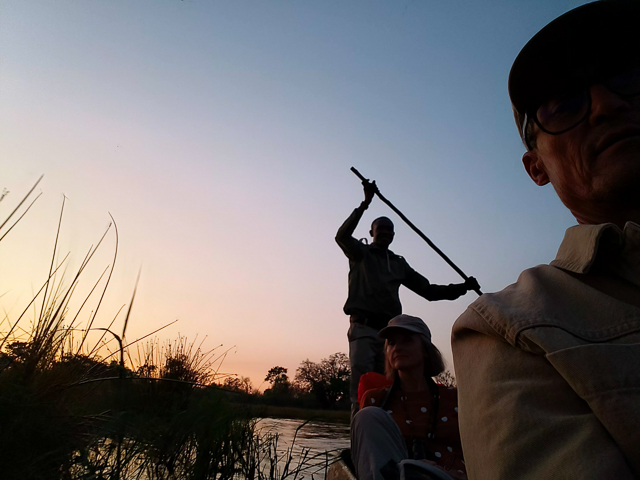As I stand on the western slopes of Ngorongoro Crater looking out over the vast Serengeti Plain, heads of giraffes appear and disappear between the tops of the acacias. There are times, often in January or February, when I also see long lines of migratory herds of wildebeest and zebra. This is not so surprising considering I am standing at a spot between two of the most renowned wildlife areas in the world.
However what is not so evident is that nearly two million years ago our ancestors walked in this area, when the landscape was quite different. Ngorongoro Crater was a massive volcano and there was a large lake where the eastern part of the Serengeti plain is today.
If I look carefully into the open plain, I can see a scar across it. This is a gorge cut by water flowing from a depression in the middle of the Serengeti Plain. Here in 1959 paleoanthropologist Mary Leakey encountered parts of a skull and some upper teeth of an ancient hominin (a member of the human family). During the following weeks the Leakey team painstakingly pieced together about 400 fragments, forming an almost complete skull of a new species. I find it hard to piece together a normal 400 piece puzzle. Imagine what that task must have been like with no picture on a box to follow, all the same color, and several missing pieces? This fossil became known as Zinj (her husband Louis Leakey originally placed it in a new genus he called Zinjanthropus) or Nutcracker Man because of its massive jaw and wide molars. Today Zinj is classified as Paranthropus boisei. The place where it was found is Olduvai Gorge. This has become one of the world´s most famous and prolific fossil sites, providing examples of various species that existed during the past two million years.
Sixty or seventy years ago there was considerable debate over whether humans evolved in Asia or in Africa. Today that may seem strange but at the beginning of the 20th century only about 20 ancient hominin fossils had been found. The geographic spread of these finds was also considerably different. Typical of many early stages of discovery, the first factor that influences the finds are not where most are, but where scientists looked. Most aficionados will begin searching near home. This is even more likely in days when travel was harder. Aside from the difficulty of getting around there was a very limited concept of antiquity at the time. Few people expected any fossils to date from before the Biblical flood, which scientists and theologians of the time calculated to be about 3,500-4,500 years ago.
So it is not surprising that the first hominin fossils were found in Europe. One of the earliest discoveries was a skull found in Gibraltar in the 1850s. It was simply labelled as an ancient human, died before the universal flood, and was put away in a cupboard. A more famous specimen was dug up by limestone quarry workers in the Neander Valley in Germany. It was described as belonging to the tribe of the Flat Heads, which still live in the American West. Later it became clear that this fossil was much older than previously thought, and there became a realization that it was a different species to us – which they named Neanderthal.
Less than ten fossils had been discovered, all in Europe, before 1891. Then Eugène Dubois discovered a fossil (Homo erectus) in Asia that appeared to be a much older hominin, which he called Java Man. Today it is thought to have lived a little less than a million years ago. In the early 1900s another fossil was found in Germany (H. heidelbergensis – H. = Homo), a couple more younger ones elsewhere in Europe, and another ancient one in China (H. erectus). The world´s most renowned paleontologists were convinced that Asia would be the most likely origin of Man. This was despite Charles Darwin´s prediction that our ancestors would probably have originated from Africa. Two of the three species of large ape known at the time were from Africa – the gorilla and the chimpanzee, and only one, the orangutan was from Asia. We now recognise more species of these large apes.
In 1924 the first big discovery in Africa happened, when a skull known as the Taung child was found in a blasted quarry site in South Africa. This fossil was relatively hard to date. The first expert to examine it, Raymond Dart, realised that it was not any ordinary primate but an early human ancestor. This was met with consternation by the established paleontologists of the day who thought the brain-case was far to small to be so, and that it was a monkey or similar primate. This was followed in the early 1930s by three or four discoveries in Europe (H. heidelbergensis and H. neanderthalensis) and two more in Indonesia (H. erectus) before a fossil of what appeared to be a different species was discovered in 1938 in another part of South Africa, not far from Johannesburg. This area of limestone caves became a rich source of fossils, but were sometimes still difficult to date. However the perceived ages, combined with the fact that in the 1940s and 50s six more ancient fossils were discovered in these caves and none from Asia, confirmed that Raymond Dart (and Charles Darwin) were right and that Man originated from Africa.
This was corroborated in 1959 when the next huge discovery happened. At Olduvai Gorge the Leakeys discovered Zinj after more than twenty-five years searching for a hominin fossil. Louis Leakey was convinced this was the place to look because they had found plenty of other fossils of ancient Pleistocene mammals, ancestors of elephants, buffaloes, hippos, horses, giraffes, rhinoceroses, hyaenas and large cats, and some very simple stone tools. The discovery of Zinj changed everything. This fossil was much easier to date, being in a layered volcanic area. It lived about 1.8 million years ago. A year later another fossil of the jaw of a different species was discovered nearby. It existed about 1.9 million years ago. This became known as Handy Man (H. habilis) because Louis Leakey attributed the simple stone tools to it. The two species lived at the same time, although their diets and social structures were likely very different. It is thought that Handy Man evolved into early H. erectus, while Zinj continued to co-exist with H. erectus before becoming extinct. H. erectus is considered the first hominin species to have set foot outside Africa, about 2 million years ago, although there is still much debate about this. More fossil discoveries will no doubt provide more information.
To place some of these finds in perspective, our species (H.sapiens) and Neanderthal are now thought to have co-existed from about 300,000 years ago, us in Africa, and Neanderthal in Europe. A small number of our species most likely successfully left Africa about 70,000 years ago. They first headed into Asia, presumably encountering other species along the way, including perhaps H.erectus. H. sapiens finally entered Europe about 40,000 years ago. The last Neanderthal left us only about 30,000 years ago.
I hope this gives some insight into why the spot where I stand on the edge of Ngorongoro Crater overlooking the Serengeti Plain seems such a special place to me. It has plenty of mystery and also so much history.
Justin









